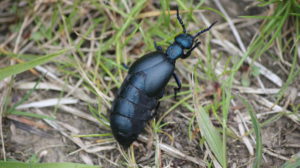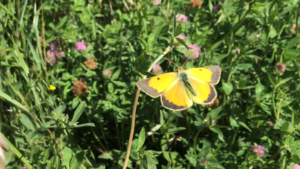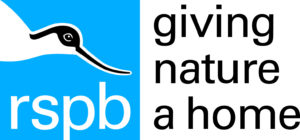RSPB Wallasea Island Nature Reserve. Healthy Life Essex
Home » Articles » Outdoor Life » Countryside in Essex » Country Parks & Nature Reserves » Without Visitor Centres » RSPB Wallasea Island
Wallasea Island is a nature reserve owned and managed by the RSPB
Wallasea Island provides visitors with spectacular walks offering views across the Rivers Crouch and Roach with excellent opportunities to get close to nature.
There is a good network of footpaths throughout the reserve so if you fancy a short stroll along the sea wall or a long hike away from the hustle and bustle of Essex life, Wallasea has something to offer everyone.
When out on the reserve there is the opportunity to experience a large open space environment with big skies, big views and lots of birds.

Click this link to download the Wallasea Island Trail Guide
Guided walks at Wallasea
Once a month our expert guide leads guided walks throughout the reserve, pointing out the wildlife on show and talks a bit about why Wallasea Island is such a good location for wildlife to flourish. Details of these walks are advertised in the events section of the RSPB website and on our Facebook page:
The guided walks are generally quite popular so bookings must be reserved, details of this can be found with the event.
Facilities at Wallasea
At present the reserve has a free to use car park, a bike shelter, plenty of benches and trails. There are two shelters at either end of Jubilee Marsh and a viewing screen closer to the car park.
Wallasea can also be reached from Burnham on Crouch during the summer via the passenger ferry that runs from the marina. Once leaving the ferry it is approximately a mile to the Wallasea car park along the sea wall.
Dogs are only permitted on the Northern sea wall and must always be kept on a lead due to the nesting and overwintering birds that use Wallasea.
Unfortunately, there is currently no visitor centre or toilet facilities on the site.
History of Wallasea Island
Four hundred years ago, Wallasea consisted of five smaller islands that regularly flooded at high tide. This would have consisted of large areas of salt marsh. Over time, this land was reclaimed from the sea through the construction of sea walls and the land was then drained allowing crops to be grown which lasted until the start of the Wallasea Island Wild coast project.
The Wallasea Island Wild Coast Project
This is a ground-breaking partnership project between the RSPB, Crossrail and the Environment Agency.
The Crossrail project involved the excavation of large volumes of mud from underneath London and this spoil had to go somewhere, and Wallasea Island was the perfect location.
The idea of the project itself was to create new areas of intertidal habitat that has been lost over the years due to development and sea wall construction along much of the South East coast of England.
To complete the project, over three million tonnes of spoil were required to completely redesign the island, building new sea walls, the creation of lagoons and islands, and the raising of the land inside Wallasea.
The land had to be raised to ensure the changes to water flows into the Crouch and Roach did not change significantly.
Over several years all of the mud was brought to Wallasea by barge and offloaded onto the island through a long conveyer belt system. From here it was transported onto the site of the future Jubilee Marsh and a team of skilled engineers and drivers crafted the new habitats to within centimetres of the design.
In 2015 the newly created habitat was breached for the first time in three locations allowing sea water to return to Wallasea Island for the first time in 400 years.

Lots more information can be found on this on the RSPB website.
Wallasea wildlife
The main habitats at Wallasea include Intertidal mudflats and saltmarsh, coastal grazing marsh, saline lagoons and arable cover crop. This provides ample space for breeding birds like Avocet, Lapwing, Redshank, Common Tern, Black-headed Gull, Yellow Wagtail and Corn Bunting.
In the winter the extensive areas of shallow water and exposed mud attract many more waders and wildfowl that come here to escape the freezing winter of their more Northerly breeding grounds. Some of the highlights include large flocks of Golden Plover and Lapwing taking to the sky in their thousands, offering a splash of gold, Green and white to the sky.

Wallasea also has a lot of rough grassland which is perfect for small mammals like voles. This in turn makes the site very attractive for raptors. Short-Eared Owls are a favourite with the visitors as they turn up around November to hunt quite close to the car park and remain throughout the winter. There is also a great chance of seeing Hen Harrier, Kestrel, Marsh Harrier, Merlin, Peregrine and Buzzard.
In the summer months, there are also lots of Bees, Butterflies and Beetles about such as the Shrill Carder Bee, Clouded Yellow and Common Blue Butterflies and the fascinating Oil Beetle which is unmistakable if you come across one.


If you have the legs for, it a walk down to the Half-moon viewpoint at the South-East corner of the reserve can reward visitors with views of Common Seals which often haul out on the muddy banks of the river Roach and in the summer, there is also a chance of seeing seal pups too.
Location
By Car
From Rochford, Essex, take the Ashingdon road until you see the brown tourism signs at Bray’s Lane and follow these to RSPB Wallasea Island.
By Bus
Loftman’s Corner, Canewdon, about 2.5 km from reserve entrance – Stephenson’s Bus Route 60 runs from Southend on Sea. From Loftman’s Corner head east away from Canewdon onto Creeksea Ferry Road. Continue along this road onto Island and to reserve entrance.
By Train
The nearest station is Rochford, 6.6 miles (10.5 km) away from the reserve.
By Passenger Ferry (April to September only)
The Burnham Ferry runs 6 days a week during summer (not Wednesdays) transporting foot passengers and cyclists across the River Crouch from Burnham-on-Crouch Town Quay to Wallasea Island and returns. Call 07704 06 04 82 for more information and ‘on demand’ pickup.
Opening times
The reserve opens at 8am and closes at 8pm or dusk, whichever is first
Further information
RSPB Wallasea Island, Creeksea Ferry Rd, Rochford SS4 2HD
Telephone: 01268 498620
Email: wallasea@rspb.org.uk
Website: https://www.rspb.org.uk/reserves-and-events/reserves-a-z/wallasea-island/



